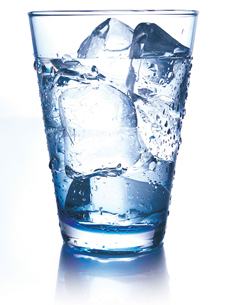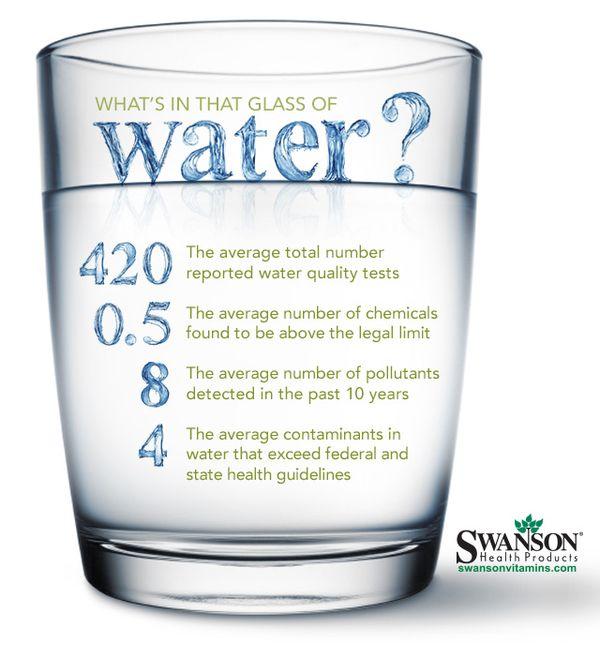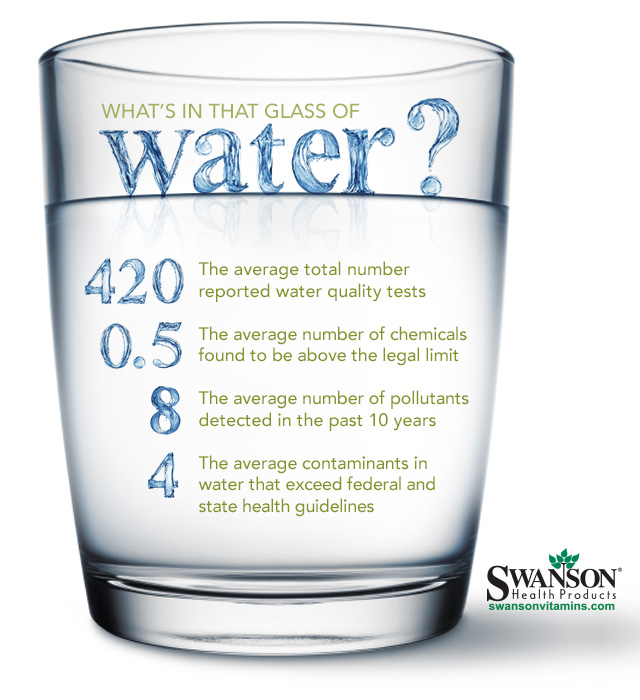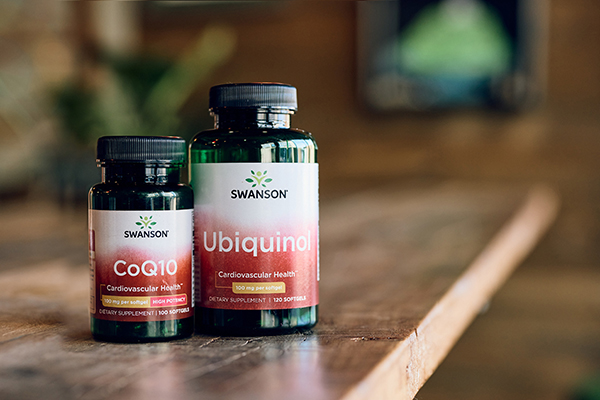Everyone’s heard warnings about poor quality drinking water in other countries, Montezuma’s Revenge and all that. When I was studying abroad we were warned about using the St. Petersburg, Russia, city water. If you don’t have boiled or bottled water to brush your teeth, they told us, use vodka. (Recent reports out of the Olympics in Sochi hint that that might still be the case.) The recent disaster in West Virginia that left local residents without safe water for over a week (and continues to be questionable) has brought the water quality and safety discussion to the forefront again.
How Is Drinking Water Regulated?
The US Environmental Protection Agency (EPA) works in collaboration with a variety of regional groups to monitor drinking water and ensure safety standards are met. The theme I ran across while researching this post was, unfortunately, we don’t really know what’s actually safe when it comes to all the various elements in our water, and the cost of figuring it all out is, predictably, prohibitive.
What’s in That Glass of Water?

Here in Fargo, the EPA’s Safe Drinking Water Information System reports no health violations and no monitoring or reporting violations. The Environmental Working Group—an environmental research and advocacy non-profit—has a National Drinking Water Database where you can find details on your local water supply provided by regional Health Departments. Their reports put Fargo on par with national averages:
- Four contaminants that exceed federal and state health guidelines (national average: 4)
- Zero chemicals above the legal limit (national average: 0.5)
- Eight pollutants detected in the past 10 years (national average: 8)
- 424 reported water quality tests (national average: 420)

The four contaminants found were haloacetic acids, bromates, trihalomethanes, and lead. Three of these four—haloacetic acids, bromates and trihalomethanes—are actually byproducts of water treatment processes. They occur when certain natural materials in water react with particular disinfectants (in this case, chlorine, chloramines, and ozone) used by water treatment facilities. As happens all too often, our solution to one problem opens the door to host of new issues.
Trihalomethanes have been linked to liver, kidney, and nervous system problems. Animal studies suggest all of these contaminants may be carcinogenic, but the results of human studies vary and have yet to provide definitive evidence.
More, however, is known about lead. Long term exposure to lead can negatively impact a child’s neurological health and overall development. The National Institutes of Health state that “Other body systems may be harmed to various degrees, such as the kidneys and blood vessels. People who survive toxic lead levels may have some permanent brain damage. Children are more vulnerable to serious long-term problems.”

The most common source of lead in drinking water is from corrosion of the pipes in household plumbing. Other sources include industrial pollution and natural erosion. According to a report from National Geographic, “In the American Society of Civil Engineers 2013 Report Card for America's Infrastructure, the nation's drinking water infrastructure was given a D grade for aging pipes, some of which date back to the Civil War.” The cost to get that infrastructure up to date nationwide is estimated to be in the trillions of dollars.
Also detected in the Fargo water system were a handful of agricultural and industrial pollutants, such as nitrates/nitrites, copper and barium. None of these were in exceedance of established health or legal limits. The degree of comfort you take from that statement, of course, is up to you.
Learn about your local water supply from the Environmental Working Group and the EPA’s Envirofacts database.
So How Can You Make Sure the Water You Drink Is Safe?
You could go buy bottled water, but that comes with its own complications: While it is regulated by the FDA and subject to the same safety standards as public water supplies, it is not required to meet the same EPA testing and reporting standards. Bottled water is also a major source of plastic waste, a significant environmental concern.
Another option is a water filter system for your home, either whole-house systems or point-of-use (i.e., at the tap) devices. These work on a handful of different principles, including filtration, distillation, reverse osmosis and ion exchange. A glass or stainless steel water bottle will help you to avoid reintroducing chemicals back into your water.
Whatever you do, the best place to start is knowing the quality of your tap water so you know what type of filter system you may need. Do you use a filter at home? Let us know in the comments section below.
Sources:
Lead poisoning. MedlinePlus. Retrieved 17 Feb 2014 from http://www.nlm.nih.gov
National Drinking Water Database. Environmental Working Group. Retrieved 17 Feb 2014 from http://www.ewg.org
Water: Basic Information about Regulated Drinking Water Contaminants. US Environmental Protection Agency. Retrieved 17 Feb 2014 from http://water.epa.gov
Water in America: Is It Safe to Drink? National Geographic Daily News. Retrieved 17 Feb 2014 from http://news.nationalgeographic.com
West Virginia Spill Reveals Threats to Drinking Water. National Geographic Daily News. Retrieved 17 Feb 2014 from http://news.nationalgeographic.com
Water on Tap: What You Need to Know. US Environmental Protection Agency. Retrieved 18 Feb 2014 from http://water.epa.gov




